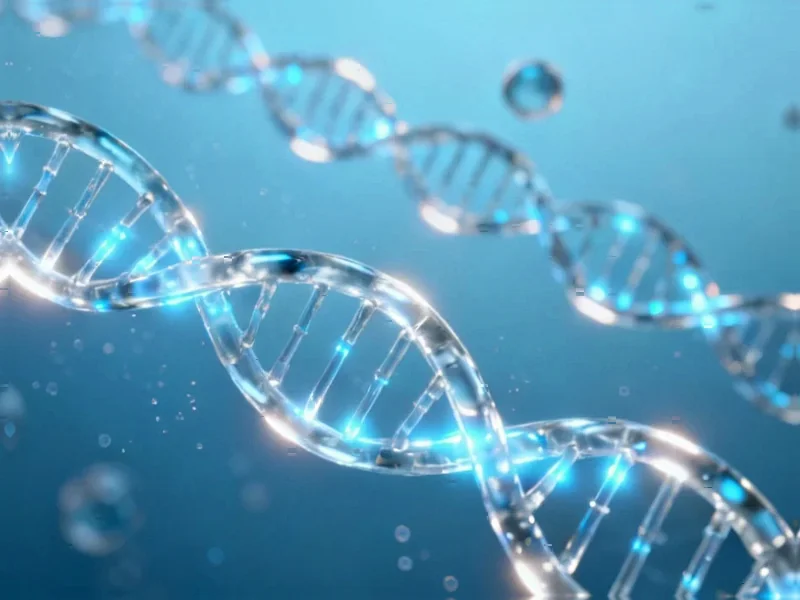Revolutionary Computational Framework Bridges Imaging and Atomic Detail
Researchers have developed a groundbreaking computational framework that transforms high-speed atomic force microscopy (HS-AFM) images into detailed 3D atomistic models of protein dynamics, according to reports published in ACS Nano. The method represents a significant advancement in bridging the gap between experimental imaging and computational modeling, sources indicate.
Table of Contents
Overcoming Resolution Limitations
High-speed atomic force microscopy has been the only experimental technique capable of directly observing proteins in dynamic action, but its limited spatial resolution has prevented detailed atomistic understanding of biomolecular function. Analysts suggest that previous computational modeling attempts to overcome these limitations have seen limited practical success until now.
The research team led by Holger Flechsig from WPI-NanoLSI at Kanazawa University and Florence Tama from multiple institutions including Nagoya University has developed what they describe as a computationally efficient flexible fitting method. The report states this approach models conformational dynamics of known static protein structures to identify atomistic models that best match experimental AFM images.
Integrated Software Platform
Scientists reportedly integrated this method into the established BioAFMviewer software platform, creating a direct workflow for analyzing AFM imaging data. The BioAFMviewer project, initiated by Flechsig in 2020 with programming scientist Romain Amyot, provides what sources describe as a unique software platform that integrates available high-resolution biomolecular structure and modeling data.
The platform features an integrated molecular viewer for biomolecular visualization, corresponding simulation AFM, and several analysis toolboxes that provide a user-friendly interactive interface. Performance is reportedly significantly enhanced by parallelized computations executed on graphic cards.
Demonstrated Success with Complex Structures
Analysis of HS-AFM data for various proteins shows that flexible fitting can infer atomistic models including large-amplitude motions, significantly improving understanding of functional conformational dynamics from resolution-limited measurements, according to the research findings.
The computational efficiency of the method within BioAFMviewer reportedly allows applications to large protein assemblies, as demonstrated with a 4 megadalton actin filament consisting of approximately 280,000 atoms. A particularly notable achievement, analysts suggest, is the creation of an atomistic molecular movie of protein dynamics showing functional conformational transitions reconstructed from HS-AFM topographic movie data.
Normal Mode Flexible Fitting Method
The normal mode flexible fitting AFM (NMFF-AFM) method, recently developed by Tama’s group, employs computationally efficient iterative normal mode analysis to model large-amplitude conformational changes. This approach allows identification of dynamic atomistic models that best represent measured AFM topographic images, the report states.
Broad Applications and Future Potential
The unique software implementation of computationally efficient flexible fitting integrates available structural data and molecular modeling with experiments, opening opportunities for extensive applications. Sources indicate this development will enable researchers to fully exploit the explanatory power of HS-AFM through large-scale analysis of single molecule imaging data.
This breakthrough promises to advance understanding of biological processes at the nanoscale by providing researchers with unprecedented ability to visualize and analyze protein dynamics at atomic resolution, according to the research team. The BioAFMviewer software is reportedly available for free download from the project website, potentially accelerating adoption across the structural biology community.
Related Articles You May Find Interesting
- Asia-Pacific Markets Rally on News of Upcoming Trump-Xi Trade Talks
- Electronic Arts Forges AI Alliance with Stability AI to Revolutionize Game Devel
- Applied Materials Implements Global Workforce Reduction Affecting Over 1,400 Pos
- Intel’s 18A Process to Power Next Three Generations of Client and Server CPUs, P
- Balyasny Expands Asia Macro Trading Team with Key Hires Following Major Recruitm
References
- https://pubs.acs.org/doi/10.1021/acsnano.5c10073
- https://pubs.acs.org/doi/full/10.1021/acs.jpcb.4c04189
- http://www.bioafmviewer.com/
- http://en.wikipedia.org/wiki/Atomism
- http://en.wikipedia.org/wiki/Atomic_force_microscopy
- http://en.wikipedia.org/wiki/Experiment
- http://en.wikipedia.org/wiki/Protein
- http://en.wikipedia.org/wiki/Protein_structure
This article aggregates information from publicly available sources. All trademarks and copyrights belong to their respective owners.
Note: Featured image is for illustrative purposes only and does not represent any specific product, service, or entity mentioned in this article.



